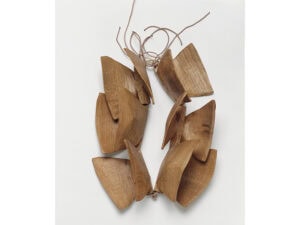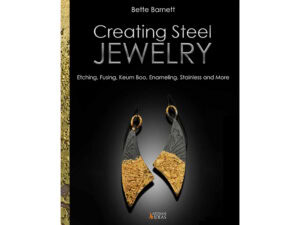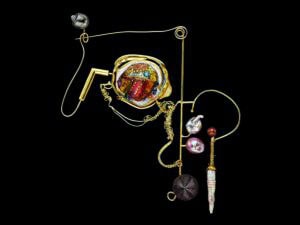
Organizers Astrid Berens and Maarten Bodt created SIERAAD Art Fair in the hopes of democratizing the sales process and increasing the popularity of jewelry. It began ten years ago on an indoor tennis court in Enschede, a city about two hours by train from Amsterdam. It has been housed by various locations over the years, gradually making its ways across the country as it has grown in size and reputation. Since 2008 it has been at home at the Cultuurpark Westerfabriek, a space that also hosts bridal expos and fashion house sample sales. For four days, the vast circular building, an old gas factory (one of the highlights, in my opinion) is filled with temporary stands of various sizes and rental cost for artists to show and, importantly, sell their work.
The idea of SIERAAD is to give individual makers the opportunity to reach both collectors and general public directly, enabling personal interaction and the chance to network with a captive audience, now numbering around 8000. But this opportunity does not come cheap. The smallest stands on the very outer ring (known as chair stands), specifically created in 2009 for recent graduates, start at 800 Euro for the four days. So while the initial idea aims to be democratic, only those with the funds in the first place are able to participate. To put it in perspective, 800 Euro will buy you two months’ rent in Amsterdam, if you’re very lucky. You’d be hard pressed to find an emerging talent who has that kind of extra money.
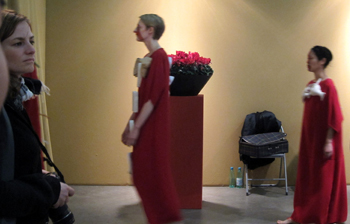

Although there are some art jewelers, both emerging and professional, selling their work at SIERAAD, the vast majority are makers who approach jewelry from a technical rather than conceptual basis. The work on show predominantly consists of cast elements, beads, precious and semi-precious metals and stones, worked with traditional techniques into fairly conventional forms. This is an environment where 3D printing is the height of innovation and creative exploration. So the question of where art jewelry fits in such a setting is at once abundantly clear and difficult to define.
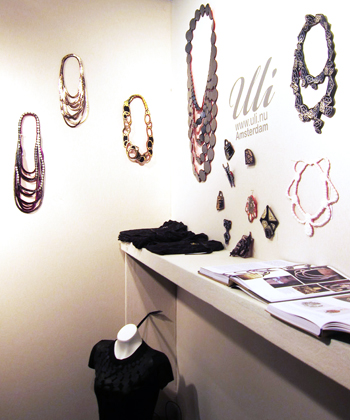
On the one hand presenting art jewelry among the more traditional style works is like hiding vegetables in a child’s food. Feeding SIERAAD visitors small morsels of contemporary jewelry amongst a style they are used to allows the viewer to gradually become accustomed to it. The flipside of this is that people can compare the two in a very base way, expecting it all to be accessible, wearable and commercial. Personally invited to show her graduation work, Everyday Fare, a series of table linen with woven or hand embroidered QR-codes linked to short films of domestic chores, Willemijn van der Sloot, a 2011 graduate from Geriit Rietveld Academie’s jewelry department, encountered at least one instance of a visitor significantly troubled, even angered, by the fact that her work ‘isn’t jewelry’ and therefore had no place at SIERAAD. In direct contrast, another response was happiness and relief at seeing something other than jewelry.

Coming from an art institute background, this commercialism of course also makes me a little weary (the endless debate about the fine line between selling and selling-out rattling around in my head as I wander the maze of stalls). I personally have no issue with people selling their work to be worn; in my opinion jewelry is at home on the body, integrated in people’s lives, not sitting in gallery vitrines and drawers for the rest of its days. But a fair seems an uncomfortable format in which to sell art jewelry. I have never understood the concept of paying to shop – buying a ticket to enter a space to have the privilege of spending more money – and selling art jewelry in this context in the end serves to limit the people who will see it to those who are more often than not looking for something else, something more traditional.
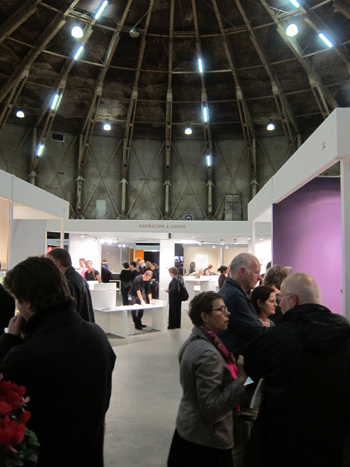
And then there is the space itself. Despite the significant size of the building, upon entering you very quickly feel overwhelmed at the sheer number of stalls and subsequent lack of space. With nearly 100 stands, it’s very easy to lose track of whom or what you have seen and it can leave you disoriented and exhausted. Artists tend their own stands and I can’t help but feel like I’m intruding. Jewelry often being small in scale and intimate by nature, you would think that these close spaces would encourage this intimacy, allowing the opportunity to get to know more about the maker. Though I’m sure that for many it does, more often than not I feel as though I’m invading someone’s personal space. Which is strangely not the case when I am actually in the private studios of some of the participants of B-Side DownTownArtJewelry Festival.
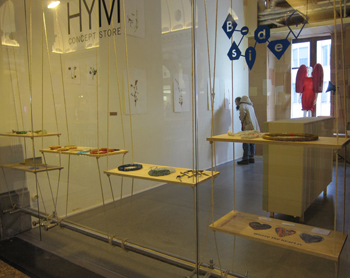
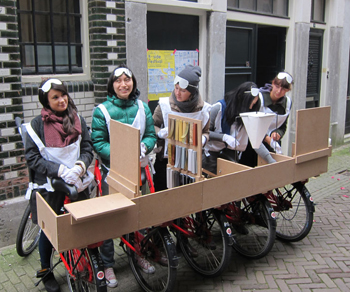

B-Side could easily occur any time of year and doesn’t necessarily need SIERAAD, but the aim is to draw visitors from the fair in the hopes of finding a new audience. Festival posters and maps were available at SIERAAD, though it’s uncertain how many were collected. One B-Side participant shared that although one or two of her visitors had been general public from the fair with no idea of what they would find, it was mostly people from the art jewelry scene crossing her doorway. This is understandable. For most people, SIERAAD is a one-day activity – and a full day at that. To see everything inside and then venture out literally across Amsterdam to a series of exhibitions, uncertain of what lies ahead, is a significant commitment.
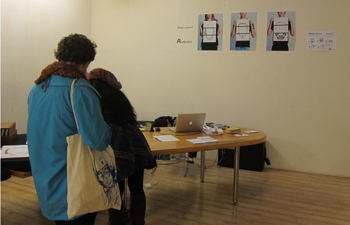
As it is so young, it is difficult to predict the effect B-Side will have in the future. But the enthusiasm and commitment is incredibly valuable and great to see. Given time it could – and hopefully will – develop into a staple (yet not stale) event of the European jewelry calendar. And while SIERAAD is possibly not the best context in which to show or sell art jewelry, perhaps it can serve as another inroad to a broader audience, in time getting more people used to the idea of art jewelry. I must admit that I was surprised by the number of people at the fair, but it’s heartening to know that people are interested and that the desire to express oneself through jewelry is obviously alive and well. And as someone who has a great appreciation for jewelry’s role in our personal lives, I am happy to see that people are out there, exploring things that may be new to them and continuing the long tradition that jewelry is a part of.

